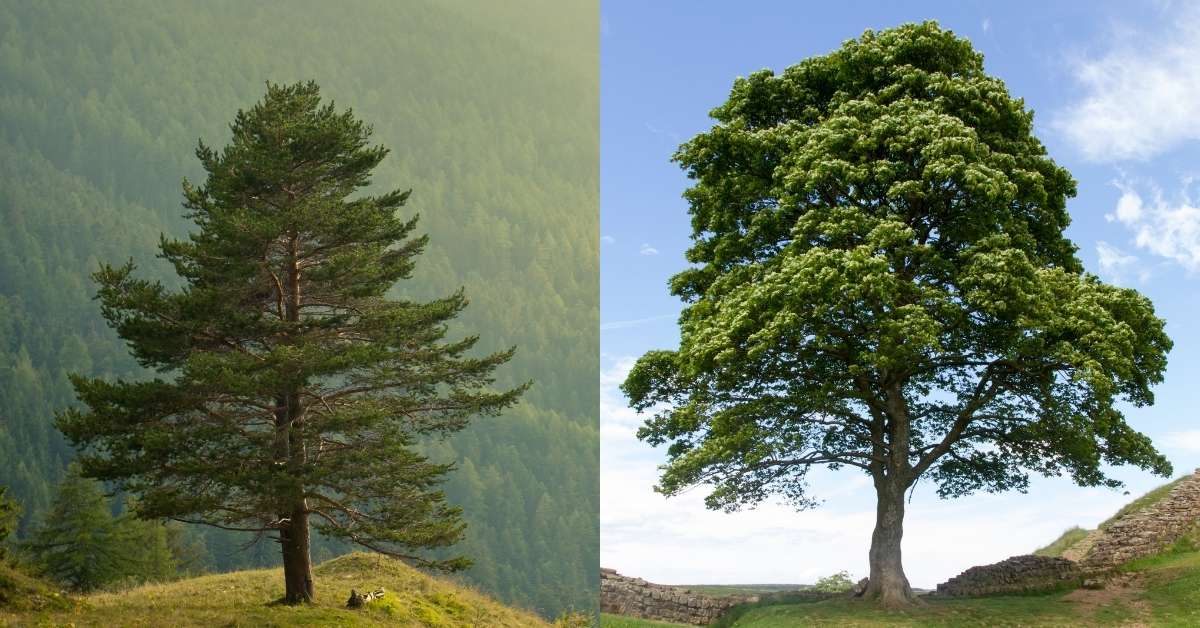Pennsylvania, often referred to as the “Keystone State,” is home to a rich tapestry of forests. The state’s abundant natural resources include some of the most impressive tree specimens in the northeastern United States. The largest Pennsylvania trees serve as towering symbols of longevity, resilience, and environmental stability, playing vital roles in the ecosystem. These trees provide shelter for wildlife, contribute to carbon sequestration, and have long been admired for their sheer size and majesty.
This article will explore some of the largest tree species found in Pennsylvania, delve into their ecological significance, and provide insights into their habitats, conservation efforts, and the unique characteristics that make them stand out. We’ll also discuss why protecting these old-growth giants is crucial for the health of Pennsylvania’s forests and future generations.
1. Pennsylvania’s Forest Legacy
The forests of Pennsylvania cover more than 16 million acres, comprising approximately 58% of the state’s land area. The state’s forests are composed of a diverse range of tree species, both hardwood and softwood, that thrive in its temperate climate and varied terrain. Among these trees, a few have reached monumental sizes, earning the title of the largest Pennsylvania trees.

1.1. Historical Context
Pennsylvania’s forests have been subjected to centuries of change. The first Europeans who settled in the region were greeted by vast, old-growth forests. However, during the 19th and early 20th centuries, much of Pennsylvania’s timber was harvested for lumber, shipbuilding, and charcoal production, leading to widespread deforestation. Many of the state’s oldest and largest trees were lost during this period.
Despite these challenges, conservation efforts in the 20th century helped to restore vast areas of Pennsylvania’s forests. Today, many of these forests are home to second- and third-growth trees, some of which have reached remarkable sizes due to protective measures and careful forest management.
2. The Largest Pennsylvania Trees by Species
Many tree species in Pennsylvania grow to impressive heights and circumferences. Some of the largest specimens have been documented by the Pennsylvania Big Tree Program, which keeps a record of champion trees across the state. These trees are ranked based on a point system that takes into account height, circumference, and crown spread.
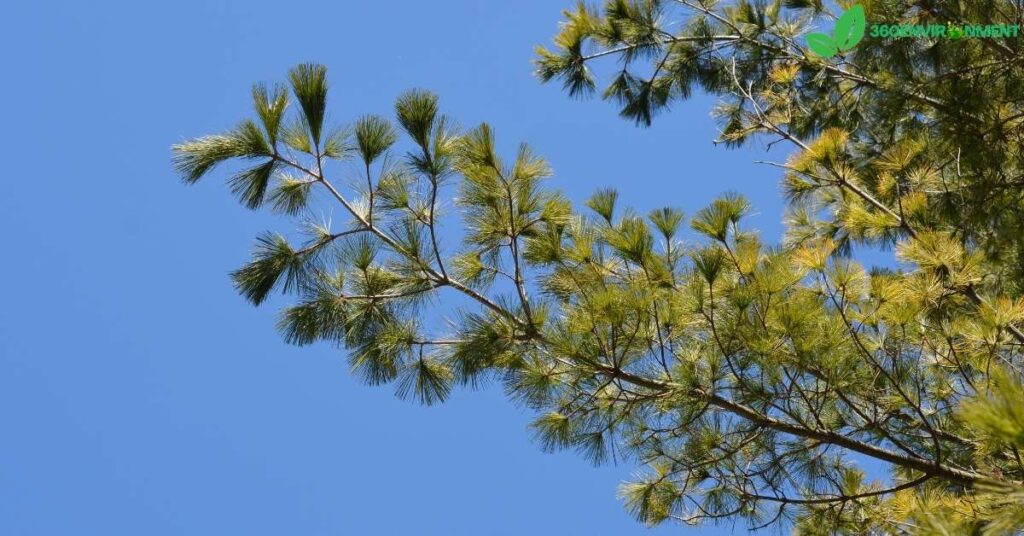
2.1. Eastern White Pine (Pinus strobus)
The Eastern white pine is one of the most iconic and tallest tree species in Pennsylvania. Once a dominant species in Pennsylvania’s forests, Eastern white pines were heavily logged during the 18th and 19th centuries, but some old-growth specimens remain in protected areas.
- Height: Eastern white pines can reach heights of over 150 feet, making them one of the tallest native tree species in the state.
- Circumference: The largest Eastern white pine in Pennsylvania has a trunk circumference exceeding 18 feet.
- Habitat: Eastern white pines thrive in well-drained soils and are commonly found in mixed forests throughout Pennsylvania, especially in the northern regions.
These towering trees provide critical habitats for a variety of bird species and small mammals, including owls, woodpeckers, and squirrels.
2.2. American Sycamore (Platanus occidentalis)
The American sycamore is known for its massive size and distinctive peeling bark. This tree is commonly found along riverbanks and floodplains, where its broad trunk and wide canopy dominate the landscape.
- Height: The tallest sycamores in Pennsylvania can grow up to 130 feet in height.
- Circumference: The American sycamore holds the record for one of the largest circumferences among Pennsylvania trees, with some reaching over 25 feet in girth.
- Habitat: Sycamores thrive in moist soils near waterways and wetlands, making them a common sight along the banks of the Susquehanna, Delaware, and Allegheny rivers.
American sycamores play an essential role in stabilizing riverbanks and providing shade, which helps to maintain cool water temperatures for aquatic life.
2.3. Northern Red Oak (Quercus rubra)
The Northern red oak is a majestic hardwood tree that is common throughout Pennsylvania. Its strong, straight trunk and spreading branches make it one of the most valued trees in both urban and forested settings.
- Height: The tallest Northern red oaks can reach up to 140 feet.
- Circumference: Mature red oaks can have a circumference of over 15 feet.
- Habitat: Northern red oaks prefer well-drained, fertile soils and are often found in mixed hardwood forests. They are especially common in the Appalachian Mountains and surrounding areas.
Northern red oaks provide food for a variety of wildlife, including deer, squirrels, and birds, which feed on their acorns.
2.4. Tulip Poplar (Liriodendron tulipifera)
The tulip poplar is one of the largest and most recognizable trees in Pennsylvania. Known for its straight trunk and tulip-shaped flowers, the tulip poplar is a fast-growing species that can reach incredible heights.
- Height: Tulip poplars are among the tallest trees in Pennsylvania, with some individuals reaching over 160 feet.
- Circumference: The largest tulip poplars can have circumferences exceeding 20 feet.
- Habitat: These trees are commonly found in rich, moist soils along valleys and slopes. They are often part of mixed hardwood forests in the southeastern and central regions of the state.
Tulip poplars are an important source of nectar for pollinators such as bees and hummingbirds, and their seeds provide food for birds and small mammals.
2.5. White Oak (Quercus alba)
The white oak is a long-lived and slow-growing tree that can reach impressive sizes over centuries. Known for its dense, hard wood, the white oak has been prized for construction and shipbuilding.
- Height: The tallest white oaks in Pennsylvania can reach up to 100 feet.
- Circumference: Some white oaks have circumferences of over 20 feet, with their wide-spreading crowns creating vast canopies.
- Habitat: White oaks thrive in a range of environments, from dry upland soils to moist lowland areas. They are commonly found in forests across Pennsylvania.
White oaks are a keystone species in Pennsylvania forests, providing acorns that are a crucial food source for wildlife, including deer, turkeys, and squirrels.
3. Ecological Benefits of the Largest Pennsylvania Trees
The largest Pennsylvania trees provide more than just an impressive visual presence; they play critical roles in their ecosystems. These ancient trees offer a range of ecological benefits that contribute to the overall health of forests and the biodiversity they support.
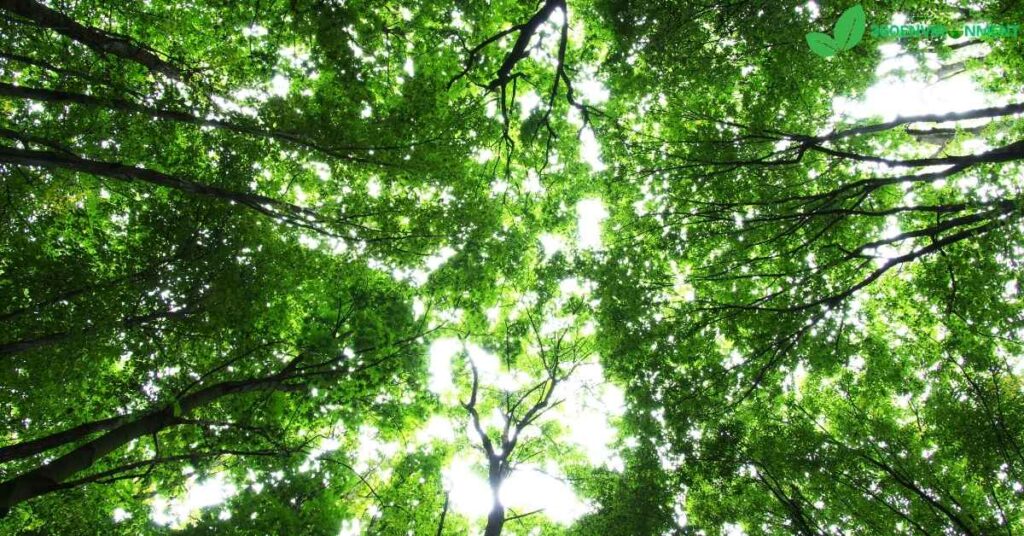
3.1. Carbon Sequestration
One of the most significant environmental benefits of large, mature trees is their ability to sequester carbon. Large trees absorb more carbon dioxide from the atmosphere than younger, smaller trees, helping to mitigate the effects of climate change.
Each of the largest Pennsylvania trees stores vast amounts of carbon in their trunks, roots, and branches. As these trees grow, they continue to capture and store carbon, making them essential components of the state’s carbon management strategy.
3.2. Habitat for Wildlife
Old-growth trees, particularly those that reach monumental sizes, serve as critical habitats for a wide range of wildlife species. The largest Pennsylvania trees often have cavities, dead branches, or extensive root systems that provide nesting sites for birds, shelter for mammals, and habitats for insects.
For example, bald eagles, owls, and woodpeckers often nest in large trees such as Eastern white pines and sycamores. Mammals, including raccoons, bats, and squirrels, use the hollow cavities of these trees for shelter and protection.
3.3. Biodiversity Support
Large trees contribute to forest biodiversity by creating microhabitats and supporting a variety of plant and animal species. The largest Pennsylvania trees often serve as “mother trees,” distributing nutrients to surrounding vegetation through complex root systems and fungal networks.
These trees also create shaded environments that foster the growth of understory plants, mosses, and fungi. By supporting diverse plant life, these trees indirectly contribute to the richness of species in the surrounding forest.
4. Conservation of the Largest Pennsylvania Trees
Protecting the largest Pennsylvania trees is crucial for preserving the state’s natural heritage. While Pennsylvania has made significant progress in conserving its forests, many challenges remain, particularly in protecting old-growth trees from logging, development, and disease.

4.1. Threats to Pennsylvania’s Largest Trees
Several threats endanger the largest trees in Pennsylvania, including:
- Logging and land development: Although many of the state’s forests are protected, private lands are still subject to logging and development, which can threaten old-growth trees.
- Climate change: Rising temperatures and shifting weather patterns can stress large trees, making them more vulnerable to pests, diseases, and drought.
- Invasive species: Invasive insects, such as the emerald ash borer and gypsy moth, pose a significant threat to large trees, particularly species like the white ash and oaks.
4.2. Conservation Initiatives
Several initiatives are in place to protect Pennsylvania’s largest trees, including:
- The Pennsylvania Big Tree Program: This program identifies and records the largest trees in the state, promoting their conservation and raising awareness about their ecological importance.
- State Forest Management Plans: Pennsylvania’s state forests are managed with sustainability in mind, ensuring that logging practices do not harm old-growth trees and that forest ecosystems are preserved for future generations.
- Private Land Conservation: Conservation easements and land trusts are crucial tools for protecting old-growth trees on private lands in Pennsylvania. By placing restrictions on development and logging, private landowners can help preserve these ancient trees and maintain the biodiversity and ecological services they provide.
4.3. The Role of Public Awareness and Education
One of the most effective ways to protect the largest Pennsylvania trees is through public awareness and education. When people understand the value and significance of these trees, they are more likely to advocate for their conservation. Educational programs in schools, nature centers, and through state parks can inform the public about the vital roles these trees play in carbon sequestration, biodiversity, and ecosystem health.
Organizations like the Pennsylvania Forestry Association and local conservation groups often host tree walks, educational workshops, and community events that highlight the importance of preserving large and old-growth trees. These programs not only promote conservation but also foster a sense of appreciation for the beauty and ecological significance of the state’s giant trees.
5. Notable Largest Trees in Pennsylvania
The largest Pennsylvania trees have become points of local pride, with some specimens even becoming famous landmarks. These trees are often visited by nature enthusiasts, researchers, and tourists alike. Below are a few notable examples of champion trees in Pennsylvania, as recognized by the Pennsylvania Big Tree Program.
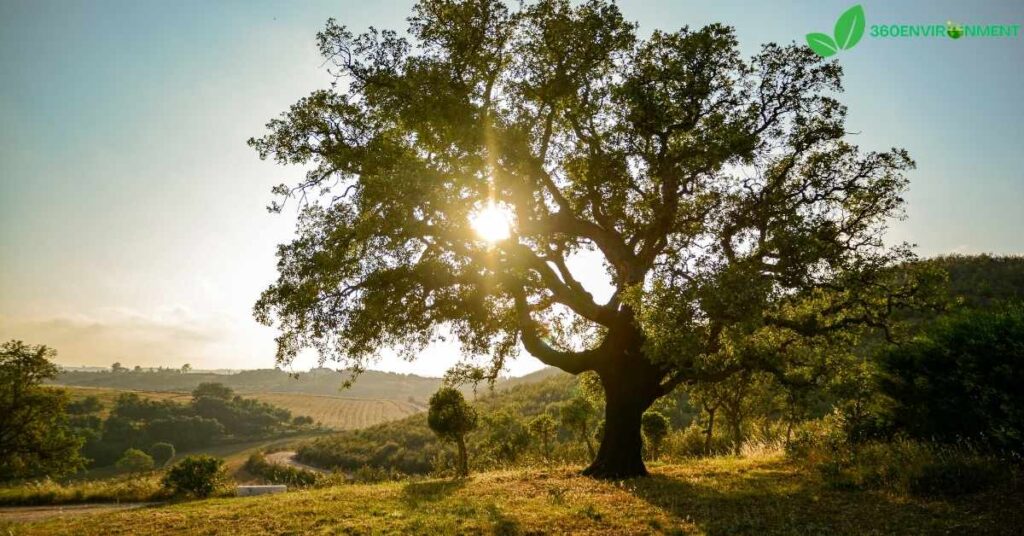
5.1. The Sacred Oak of Oley Valley
The Sacred Oak, located in Berks County, is one of the most famous and revered trees in Pennsylvania. This massive white oak (Quercus alba) is estimated to be over 500 years old, making it one of the oldest trees in the state. Its towering stature and expansive canopy have made it a symbol of longevity and resilience.
- Height: 73 feet.
- Circumference: Over 25 feet.
- Significance: Local Native American tribes historically considered the tree sacred and used it for ceremonial purposes. Today, it stands as a testament to Pennsylvania’s deep-rooted natural history.
5.2. The Snyder-Middleswarth Natural Area Hemlock
Located in the Snyder-Middleswarth Natural Area, this Eastern Hemlock (Tsuga canadensis) is one of the tallest and largest of its species in the state. The area is known for its old-growth forest, which has been protected from logging and remains a pristine example of Pennsylvania’s natural heritage.
- Height: 140 feet.
- Circumference: 12 feet.
- Significance: Eastern Hemlocks are the state tree of Pennsylvania, and this towering specimen is one of the most impressive in the region. The Snyder-Middleswarth Natural Area is a protected forest, ensuring that these ancient giants continue to thrive.
5.3. The Cook Forest Giant
The Cook Forest Giant is an Eastern White Pine (Pinus strobus) located in Cook Forest State Park, a region known for its majestic old-growth trees. Cook Forest is often referred to as the “Forest Cathedral” because of its towering pines and hemlocks that create a serene and awe-inspiring canopy.
- Height: Over 180 feet, making it one of the tallest trees in the northeastern United States.
- Circumference: 14 feet.
- Significance: This tree, along with others in Cook Forest, attracts tree enthusiasts and researchers interested in old-growth forest ecology. The forest is protected, ensuring that these ancient trees continue to play their vital roles in the ecosystem.
6. Why the Largest Pennsylvania Trees Matter
The largest Pennsylvania trees are not only impressive for their size and age but also for their environmental and cultural significance. These trees serve as living symbols of resilience, having withstood centuries of natural and human-induced changes. Their preservation is crucial for maintaining the ecological integrity of Pennsylvania’s forests.
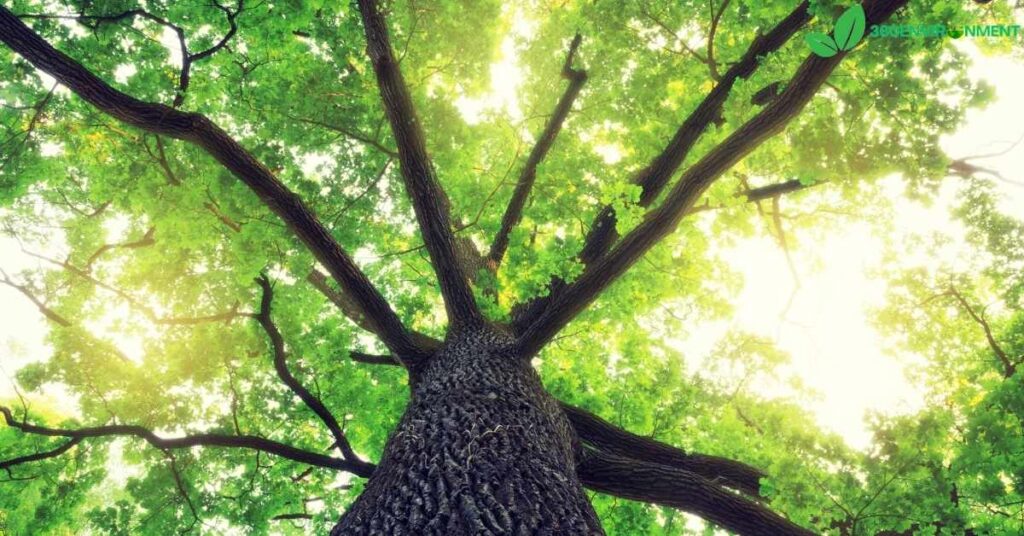
6.1. Indicators of Forest Health
Large, old-growth trees are often indicators of forest health. These trees suggest that the forest has been allowed to grow undisturbed for a long period, supporting a complex and rich ecosystem. The presence of largest Pennsylvania trees often points to an environment that provides a range of habitats for wildlife, fosters biodiversity, and maintains soil and water quality.
6.2. Climate Change Mitigation
As climate change continues to pose significant challenges globally, the role of large trees in sequestering carbon has become even more critical. The largest Pennsylvania trees act as carbon sinks, absorbing and storing large amounts of carbon dioxide over their long lifespans. Protecting these trees is an essential component of climate change mitigation strategies, as their loss would result in the release of stored carbon back into the atmosphere.
6.3. Cultural and Historical Value
In addition to their ecological roles, many of the largest Pennsylvania trees hold significant cultural and historical value. Trees like the Sacred Oak have been part of local lore and traditions for centuries. These trees are often viewed as landmarks and are cherished by the communities that surround them. Protecting these trees helps preserve not only the natural history of Pennsylvania but also the cultural heritage associated with these living monuments.
7. Conclusion: The Future of Pennsylvania’s Largest Trees
The largest Pennsylvania trees are more than just natural wonders—they are keystones in the environmental fabric of the state’s forests. These trees provide critical habitats for wildlife, sequester carbon, stabilize ecosystems, and offer cultural and historical significance. However, they also face numerous threats, including climate change, logging, land development, and invasive species.
The future of Pennsylvania’s largest trees depends on continued conservation efforts, public awareness, and responsible forest management. By protecting these ancient giants, Pennsylvania can ensure that its forests remain resilient and biodiverse for future generations to enjoy. The largest Pennsylvania trees will continue to stand as guardians of the forest, inspiring awe and providing essential ecological services for centuries to come.
FAQs
- What is the largest tree species found in Pennsylvania?
The Eastern White Pine is among the tallest tree species in Pennsylvania, with some trees reaching heights of over 180 feet. - Why are old-growth trees important for the environment?
Old-growth trees play crucial roles in carbon sequestration, providing habitats for wildlife, and supporting biodiversity within forest ecosystems. - Where can I see the largest trees in Pennsylvania?
Some of the largest trees can be found in protected areas like Cook Forest State Park, the Snyder-Middleswarth Natural Area, and various state forests across Pennsylvania. - How does climate change impact the largest trees in Pennsylvania?
Climate change can increase stress on large trees, making them more vulnerable to pests, diseases, and extreme weather events. - What conservation efforts are in place to protect Pennsylvania’s largest trees?
Conservation initiatives include state forest management plans, the Pennsylvania Big Tree Program, and private land conservation efforts through land trusts and conservation easements. - What is the Pennsylvania Big Tree Program?
The Pennsylvania Big Tree Program is a statewide initiative that tracks and records the largest trees in Pennsylvania, raising awareness about their importance and promoting conservation efforts.
Read More: The Spooky Tree: Myths, Ecology, and Environmental Importance

